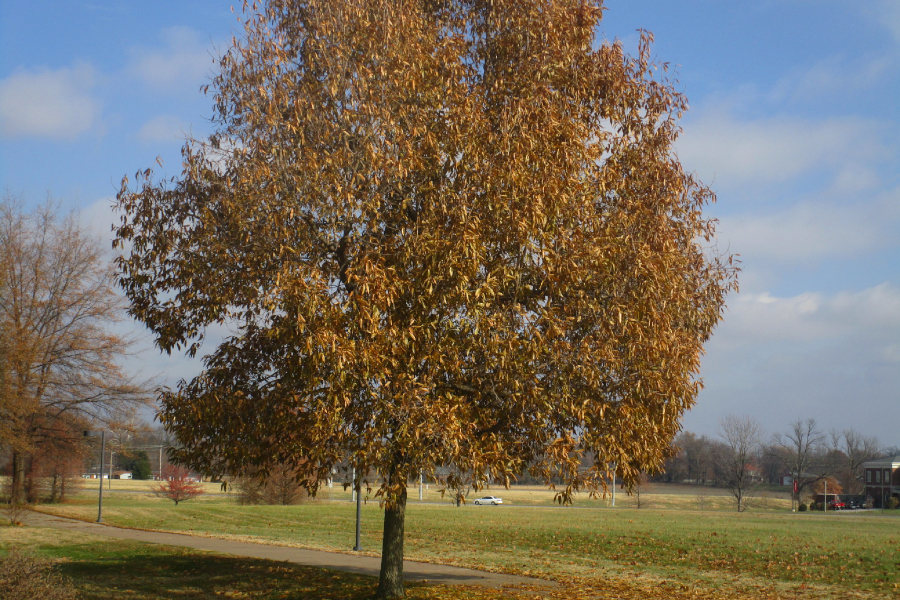Quercus imbricaria
Despite being an oak species, the shingle oak lacks the distinctive leaves of most oak trees. Instead, shingle oak features oblong, shiny, dark green leaves similar to those of rhododendrons or laurels.
Location
When entering the arboretum from the corner of May and Lovell Streets, walk along the East-West trail along Lovell Street to see if you can spot the arboretum’s shingle oak tree.


History at Hadwen
There’s no specific documentation showing Hadwen planted shingle oak on the property, but in 1900 he writes that he has various oak trees “of nature’s planting” up to four feet in diameter and sixty feet spread of limb. A 1971 preliminary report on trees in the arboretum did not uncover any shingle oak but did find varieties including scarlet oak, red oak, black oak, and chinquapin oak.
Keep Learning
Detailed Species Information
Shingle oak is a deciduous tree in the red oak group of the family Fagaceae. It is found throughout the Midwestern and upper Southern regions of the United States. Typically, this species reaches a height of 50–60 feet (15–18 meters) and a diameter of 4.6 feet (1.4 meters) although much larger specimens have been recorded.
It is characterized by a broad canopy and shiny, dark green, almond shaped which are very distinct from prototypical oak leaves. The leaves grow in an alternate pattern and turn dark red in the autumn. The bark of the shingle oak is light brown and scaly. The seeds of shingle oaks are nuts and are half covered in a large cap as most acorns typical of oaks are. The flowers emerge in May and are a yellow-green color. The shingle oak prefers upland habitats with well-drained soil and its acorns provide an important food source for small mammals and some birds.
